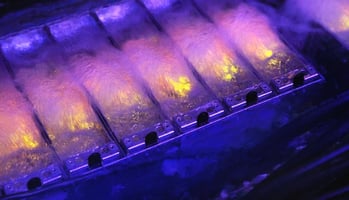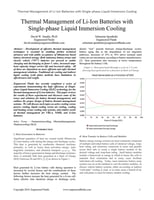A datacenter magazine promises a lively discussion called “Is two-phase immersion cooling leading...
What Is Better Single Phase Cooling Or Two-Phase Cooling?

This is a question that many people often ask themselves. Let's begin with a common factor; both systems single-phase cooling and two-phase cooling use immersion cooling, a liquid that conducts heat better than air. They also don't require CRAs, chillers, CRAHs, or raised floors. Even with that, these two technologies have significant differences.
Below is a simple description of how the two work
Single-phase cooling
Single-Phase cooling is usually installed vertically in the coolant bath of a hydrocarbon-based dielectric fluid. Heat is transferred to the coolant through direct contact with the server components. However, unlike the two-phase cooling system, its coolant doesn't boil off. It remains in liquid form hence the term single phase and is cooled down via a heat exchanger.
Two-phase cooling
With this system, its servers are sealed in a bath specifically engineered fluorocarbon-based liquid. This liquid has a low boiling point hence it heats up easily in the server. Boiling the liquid causes a change to gas, giving the system its two-phase cooling system. To help in decision making see how these two technologies compare across four important categories;
Structure and upfront cost
Two-phase cooling systems are a bit complex in their engineering and are quite expensive to maintain and install. Pumps are not needed to circulate fluid around its servers however it employs the use of sealed racks. In contrast, although Single-phase cooling or single immersion requires a pump to circulate the coolant through the system, this operation is not as complicated as two-phase cooling. It has minimal operating expenses and functions efficiently.
Efficiency level
Both technologies blow the doors off air-cooled data centers in their cooling efficiency. But the two-phase cooling is better as it has a PUE of 1.01 to 1.02 versus 1.02 to 1.03 for the single phase. The single-phase helps in crushing relative energy inefficiency of non-immersion cooled systems. This simply means it has a good cooling capacity and high-density performance.
Density capabilities
Two-phase cooling is often used to support high-rank densities of up to 250kw. This is in all ways impressive however getting hardware of 100kw in the market is hard. Single-phase cooling can handle 200kw per rack lower than the two phases. This is made possible when attached to a chilled water system. However, it is true to say that both technologies provide sufficient cooling power and can handle any power-intensive equipment.
Global warming potential
Both technologies help (ICT) leaders in locating their data centers, because they are easy to install as compared to the traditional air cooling systems. According to studies fluorocarbon-based fluids used in two-phase cooling present several safety liabilities such as global warming. The boiling action in this process also affects the IT assets through a process called cavitation. Single-phase cooling normally uses dielectric coolant, electrosafe that is inert, non-corrosive, not flammable and the GRC has proven single-phase immersion to be cost-effective, reliable and it does affect the environment negatively.
The bottom line
This is a simple comparison of the two immersion techniques. The single-phase cooling functions way better than the two-phase cooling system. This, however, doesn't mean that the two-phase is not good, it’s only that the single-phase is affordable, has easy operations, and has less maintenance.



